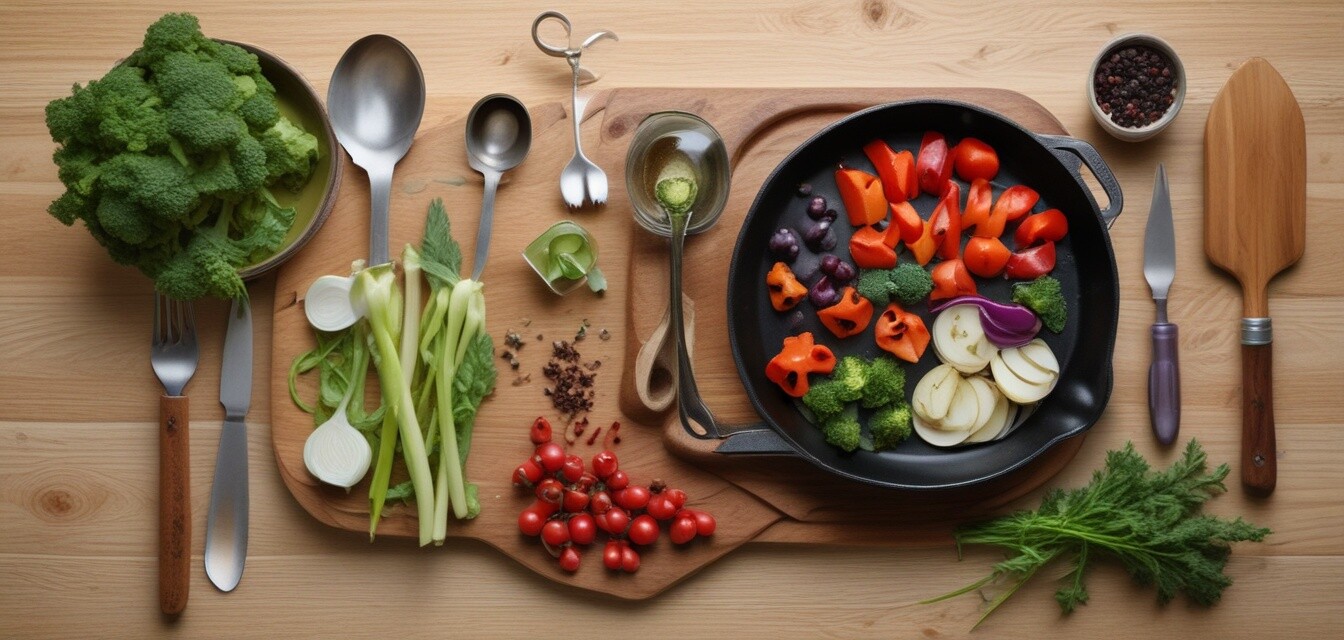
Techniques for achieving perfect sautéing
- Understand the importance of heat control.
- Use the right oil for your ingredients.
- Cut ingredients uniformly for even cooking.
- Don’t overcrowd the pan.
- Know the timing for adding ingredients.
Sautéing is a fundamental cooking technique that enhances the flavors and textures of various ingredients. Whether you are dealing with meats, vegetables, or a delightful mix of both, mastering sautéing can elevate your dishes significantly. This article will explore essential tips and techniques for perfect sautéing, helping you create flavorful meals with ease.
The Basics of Sautéing
Sautéing is a French cooking method that involves cooking food quickly in a small amount of fat over relatively high heat. This technique can help achieve a beautiful caramelization, enhancing the natural flavors of your ingredients.
Key Elements of Sautéing
| Element | Description |
|---|---|
| Heat | Control the heat to achieve the desired color and texture. |
| Fat | Using the right type of fat can improve flavor and prevent sticking. |
| Ingredients | Cutting ingredients uniformly ensures even cooking. |
| Timing | Keen awareness of timing can enhance the overall dish. |
Choosing the Right Equipment
Having the appropriate cookware is vital for successful sautéing. Here are some essential tools:
- Quality sauté pan or skillet
- Spatula or wooden spoon
- Measuring spoons for oil and spices
- Cutting board and knife
Pan Selection
Selecting the right pan can make a significant difference in your sautéing experience. The best choices include:
| Type of Pan | Best Use |
|---|---|
| Stainless Steel | Great for browning and searing. |
| Non-stick | Ideal for delicate ingredients like eggs and fish. |
| Cast Iron | Excellent heat retention; perfect for finishing in the oven. |
Essential Techniques for Perfect Sautéing
To truly master sautéing, consider these techniques:
- Manage heat wisely: Always preheat your pan before adding oil. Adjust the heat based on the ingredients.
- Select the right oil: Use oils with high smoke points like canola, avocado, or grapeseed oil for a clean flavor.
- Prep your ingredients: Dice or slice ingredients uniformly to ensure even cooking.
- Avoid overcrowding: Give ingredients space to cook evenly and develop a good sear.
- Add ingredients in stages: Start with dense ingredients and follow with softer ones to achieve the best texture.
Tips for Enhancing Flavor
For an extra burst of flavor, try:
- Herbs and spices: Add them towards the end of cooking to maintain their aroma.
- Acidity: A splash of vinegar or citrus can brighten up your dish.
- Broth instead of water: Use broth for a richer flavor when deglazing the pan.
Common Mistakes to Avoid
Even experienced cooks can make mistakes. Here are some common pitfalls to watch out for:
- Not preheating: Skipping preheating can lead to uneven cooking.
- Using too much oil: Excess oil can lead to greasy food.
- Not using enough seasoning: Ensure your dish is well-seasoned to bring out its natural flavors.
Conclusion
Mastering the art of sautéing may seem daunting, but with practice and attention to detail, you can transform ordinary ingredients into something extraordinary. Embrace the techniques outlined in this guide, and don't hesitate to experiment in the kitchen. For further insights on various cooking techniques, check out our Cooking Tips & Techniques blog category.
Beginner’s Section
- Start with simple vegetables like bell peppers, onions, and zucchini.
- Practice controlling the heat and learning how different ingredients react.
- Try watching cooking shows or tutorials for visual guidance.
Pros
- Quick cooking method that preserves nutrients.
- Enhances flavors significantly.
- Versatile technique suitable for many ingredients.
Cons
- Requires attention to avoid burning.
- Can be tricky for beginners.
- May require a well-ventilated kitchen to handle smoke.